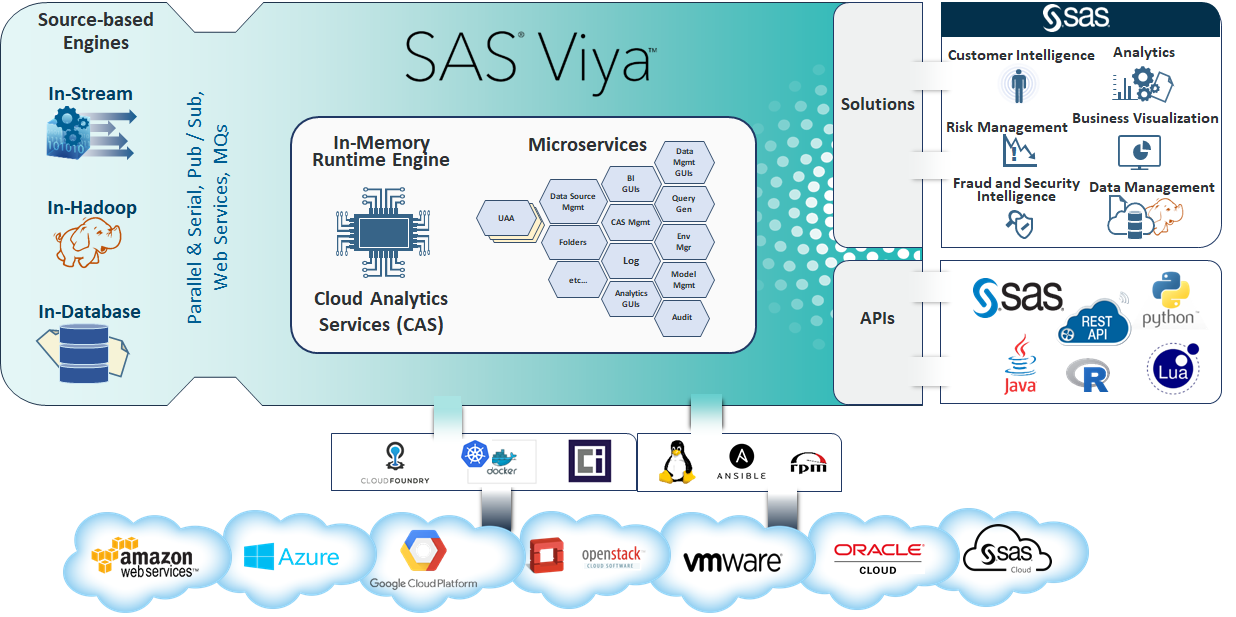You know that feeling as a consumer – that’s great on the one hand but taxing on the other – where you have lots of choice but no clear idea about what choice to make? Well, it’s becoming a bit like that with analytics and how it’s provided. It’s no longer a choice between on-demand and hosted solutions. You can now choose something that’s hosted in the cloud, and even within that there are plenty of choices as to which provider you use.
The last few years have seen a vast change in how organisations are approaching provisioning infrastructure and services. The market has exploded and no longer is the choice only between on-premises or hosted solutions. It has never been better for consumers.
Among cloud providers, Amazon Web Services (AWS) led the charge and has turned the art of the possible into reality. In recent years, competitors like Google Cloud Platform (GCP) and Microsoft Azure have been following hot on their heels. IBM, Adobe and Oracle are also taking a slice of the market. On top of these providers, technological advances like Platform as a Service (PaaS), private cloud and container solutions have broadened the landscape, providing a plethora of choice to organisations.
So what can an analytics vendor like SAS do to ensure that it meets the demands of today’s market?
With the release of SAS® Viya®, our capability has been rewritten from the ground up to the cloud. It has been redesigned around a microservices architecture that is easily deployed and scaled, both in the cloud and on-premises. AWS QuickStarts have been released to facilitate quick cloud deployments, and this will be further expanded for Azure and GCP over the next few months. These enable customers to get their SAS Viya environments up and running in around an hour, which is a major step change.
It is built to run on Application Platform as a Service (aPaaS), with the first releases supporting deployment into Cloud Foundry infrastructure. This enables the deployment of applications within virtual hosts to allow scalability and availability to be controlled and maintained by the PaaS infrastructure. Cloud Foundry can run on a mixture of infrastructure, including on-premises, private cloud and public cloud. This gives flexibility to move between infrastructure providers with ease.
Another alternative to traditional PaaS is containers. Containers provide the ability for rapid service instantiation – booting in seconds to provide a user with an analytics environment. Containers can be run on public and private cloud providers and easily moved between the two. Unlike traditional virtualisation technology, containers tend to have a smaller footprint, and this allows you to better provision the underlying infrastructure. Predefined containers can be called on by users and layered with additional products for greater functionality, for example, Python or R runtimes.
Cloud adaption by SAS customers
Cloud adoption by SAS customers has been varied. We have seen a huge variance in levels of cloud maturity. These range from those that may only use cloud providers for proof of concept or nonproduction workloads to “cloud-first” policies with appropriate on-premises deployments, right through to cloud-only strategies. Across these customers we have been providing services on how to migrate existing workloads to the cloud, including cloud readiness and modernisation assessments.
Stay tuned for further information. In the meantime, if you want to find out more, check out the following links:
- SAS Viya overview
- What should you know about SAS on Cloud Providers
- Software, infrastructure and services designed and managed by SAS for optimal performance and value: SAS Cloud

